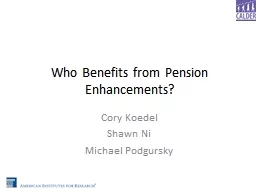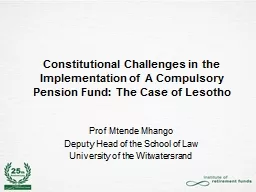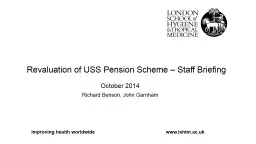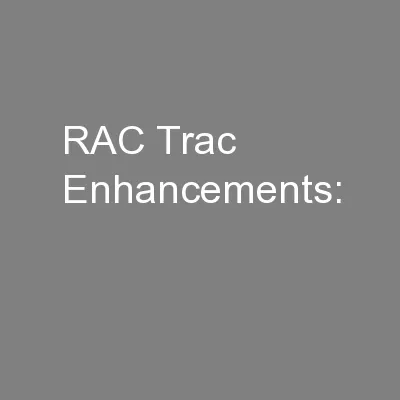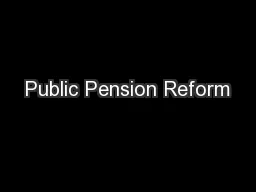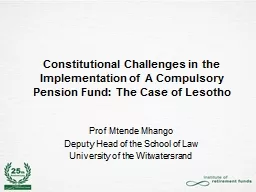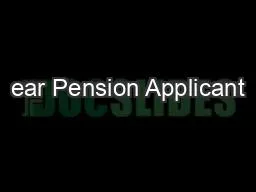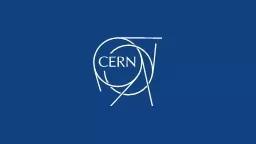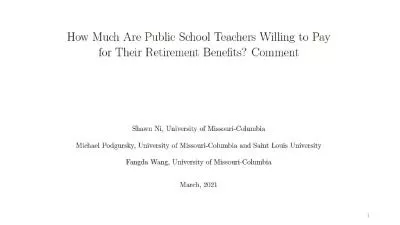PPT-Who Benefits from Pension Enhancements?
Author : pamella-moone | Published Date : 2017-12-09
Cory Koedel Shawn Ni Michael Podgursky The Policy Event Between 1995 and 1999 the average annual nominal return to the DJA was 25 percent 200 percent cumulative
Presentation Embed Code
Download Presentation
Download Presentation The PPT/PDF document "Who Benefits from Pension Enhancements?" is the property of its rightful owner. Permission is granted to download and print the materials on this website for personal, non-commercial use only, and to display it on your personal computer provided you do not modify the materials and that you retain all copyright notices contained in the materials. By downloading content from our website, you accept the terms of this agreement.
Who Benefits from Pension Enhancements?: Transcript
Download Rules Of Document
"Who Benefits from Pension Enhancements?"The content belongs to its owner. You may download and print it for personal use, without modification, and keep all copyright notices. By downloading, you agree to these terms.
Related Documents

